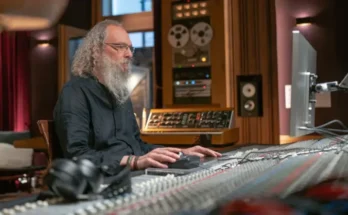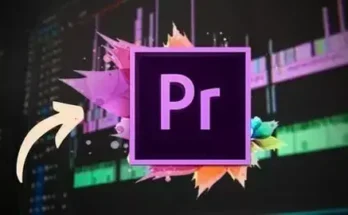P2P | 21 February 2020 | 6.2 GB
Tune in to this episode for some amazing mixing and tracking advice from Zach Nicholls. During this episode, Zach shares tracks from Ariana Grande and Victoria Monet, Eric Bellinger, and Karina Pasian. You’ll learn how and why Zach likes to add noise and grit to his mixes, and what sort of tricks he uses to create his unique “landscape” of audio. Zach shares with us some great advice for staying organized and efficient when tracking and mixing in the studio. In this episode, Zach also shares a lot of great advice for how to treat vocals in a mix, including some great tips on using saturation. Since we open up multiple mixes throughout this episode, you can really get a sense for Zach’s process, and how he changes his behavior from artist to artist. It’s an extremely informative and educational episode for anyone looking to improve their mixing and tracking techniques, especially when it comes to killer vocals.
Also in this episode:
– How Zach keeps himself motivated
– Zach’s goals for moving forward with his career: adapting more philosophies and workflows
– The importance of listening to things through your studio speakers, and taking breaks in the studio
– How Zach got his start in Boston: who helped him and how it happened, and what he recommends to people starting out
– How to be accessible in the industry
– How he treats a mix differently depending on the time frame
– Taking notes in Pro Tools
– Zach’s organizational methods and templates
– How Zach approaches making two similar vocals distinct, but also work well together
– Zach’s routing for each session
– Philosophy on how to decide how many doubles to make of a vocal
– Panning vocals tips
– Music theory advice, and how it applies to vocal mixing
– How Zach changes the way he works with vocalists, depending on their personality
– The importance of editing as you track, and how Zach does it
– Zach’s advice on using reverbs, delays, and de-essers
– Tips for compression on vocals: compressing for “tone”
– Zach’s philosophy on pitch correction for vocals
– Why Zach doesn’t side chain delays, and how to make delays more present
– Zach’s two delay methods
– Using asymmetry as a tool in your mix
– What Zach uses on vocals and why
– Zach’s philosophy on the low end in vocals
– Why and how Zach uses noise in analog emulation plugins
– Getting “grit” in a track: how Zach does it
– Mixing instruments with similar resonance
– Zach’s method of using digital summing busses: why and how he does it
– When to use subtle compression, vs strong compression, vs no compression: taming vs shaping
– Adding foley tracks to create a soundscape
– Mimicking analog in the digital realm
– Advice for using saturation and parallel compression
– Zach’s philosophy on “slowing down the audio”
– A discussion of slew rate
– Using EQ to accentuate aspects of your mix
– How Zach EQs vocal reverb
– Panning and asymmetry
– A discussion of sample rate and bit depth, including why he upsamples to the sample rate he likes to work with
– Zach’s tracking experiences with Eric Bellinger
– The tracking and comping process: how much is too much comping?
– Zach’s template for cutting vocals, including a discussion of the different templates that he uses
– The importance of templates, and of constantly refining them
– Organization for comping and tracking: key commands for playlisting, and methods for speeding up the process
– Zach’s preparation habits before tracking
– How Zach handles sessions with massive amounts of vocals all at once
– Why Zach prefers when an artist agrees to do background vocals on a different day, with a different mic
– Zach’s vocal chain for tracking
– Processing for vocals, how Zach treats the background vocals differently than leads
– How Zach treats his summing sections, and how that’s a huge portion of his unique sound
– Advice on treating low end in your mix
– Philosophy on audio as compressions and rarefactions and how that ties into mixing
– Gain staging advice
– Zach’s overall thoughts on compression and saturation
– Making your own sound: the importance of not necessarily going with the status quo on everything
– The importance of developing a system and being organized in order to improve your workflow
[toggle title=”Home page”]https://tinyurl.com/ttu868w[/toggle]

http://alfalink.to/0028f6e9a0a1804b35c9
Please REPORT in Comment Broken Links




